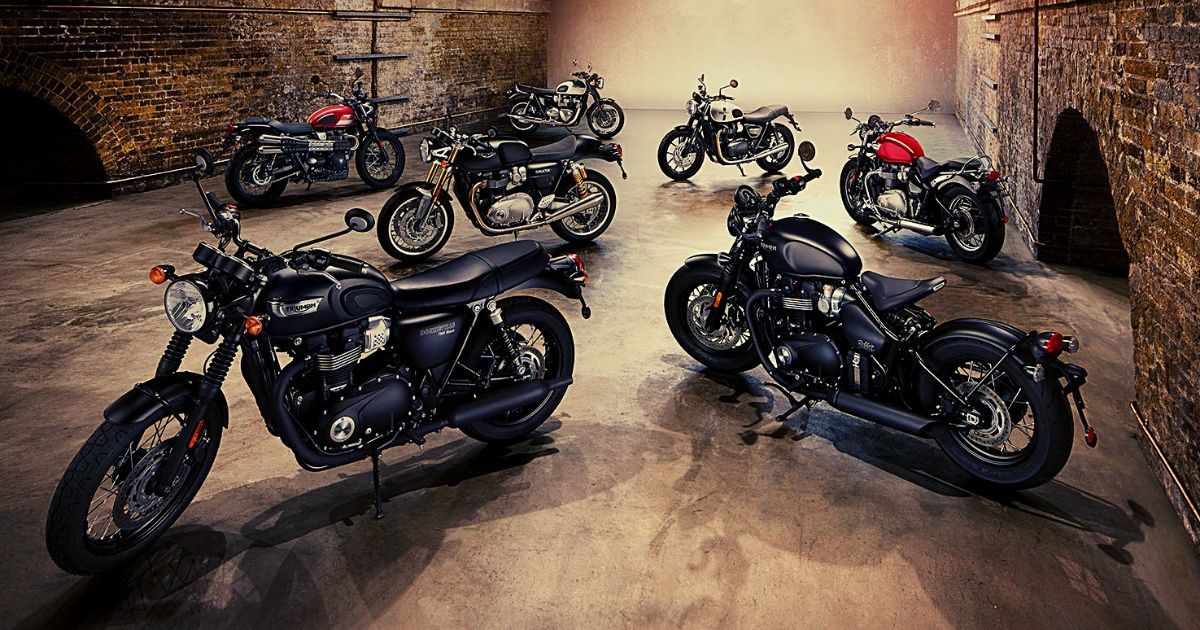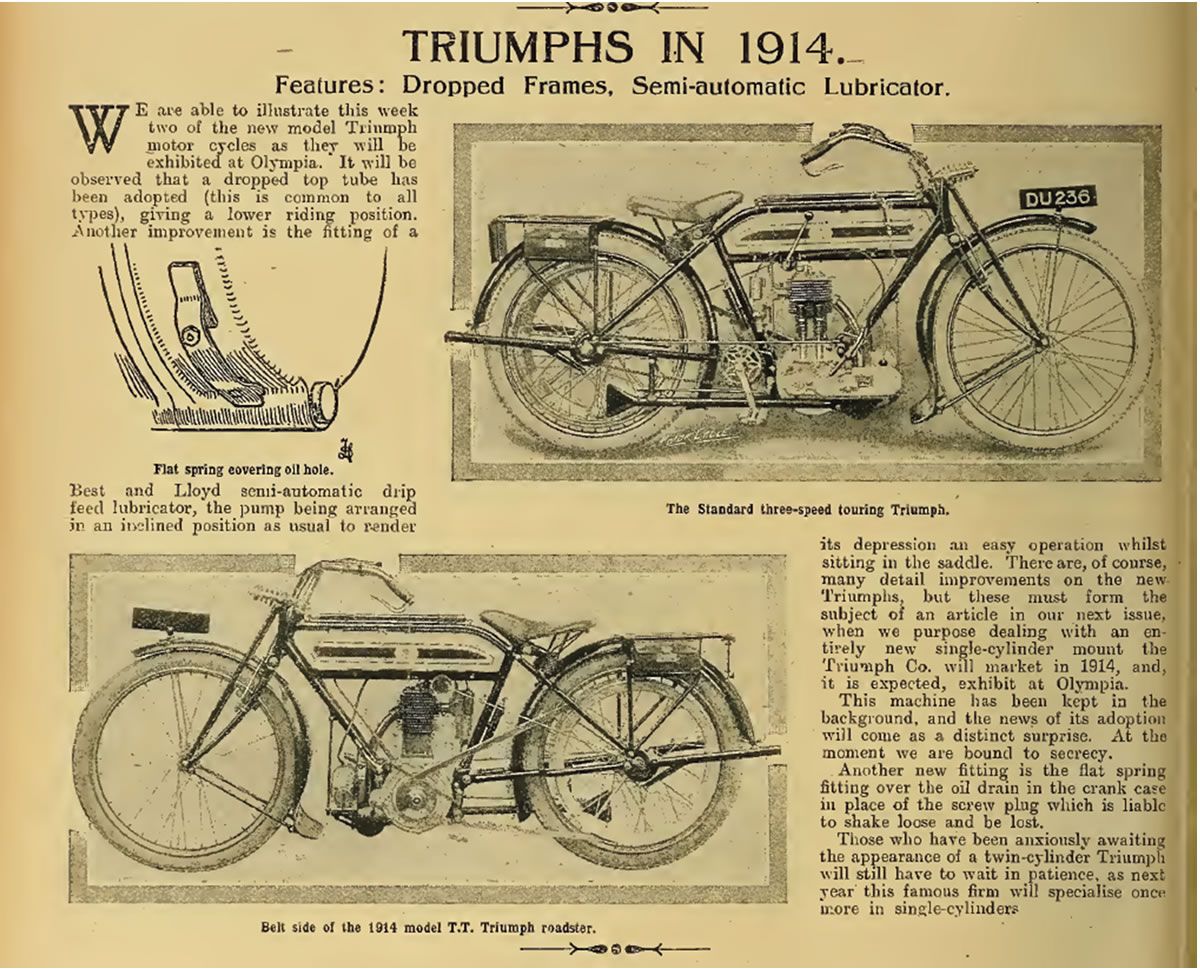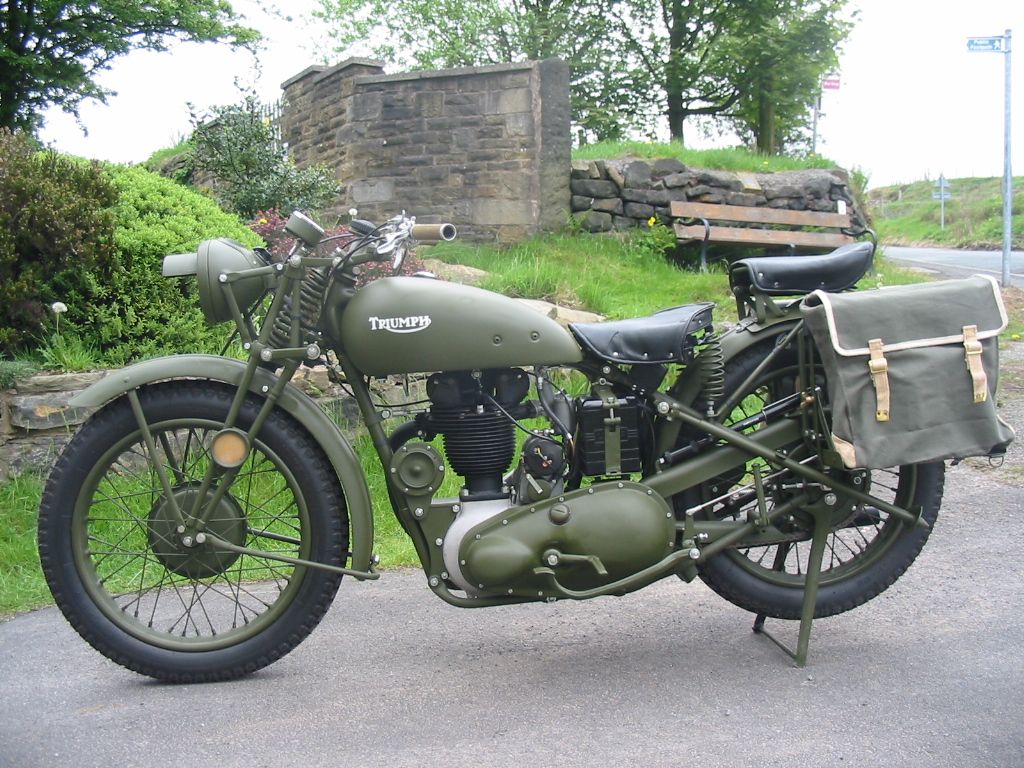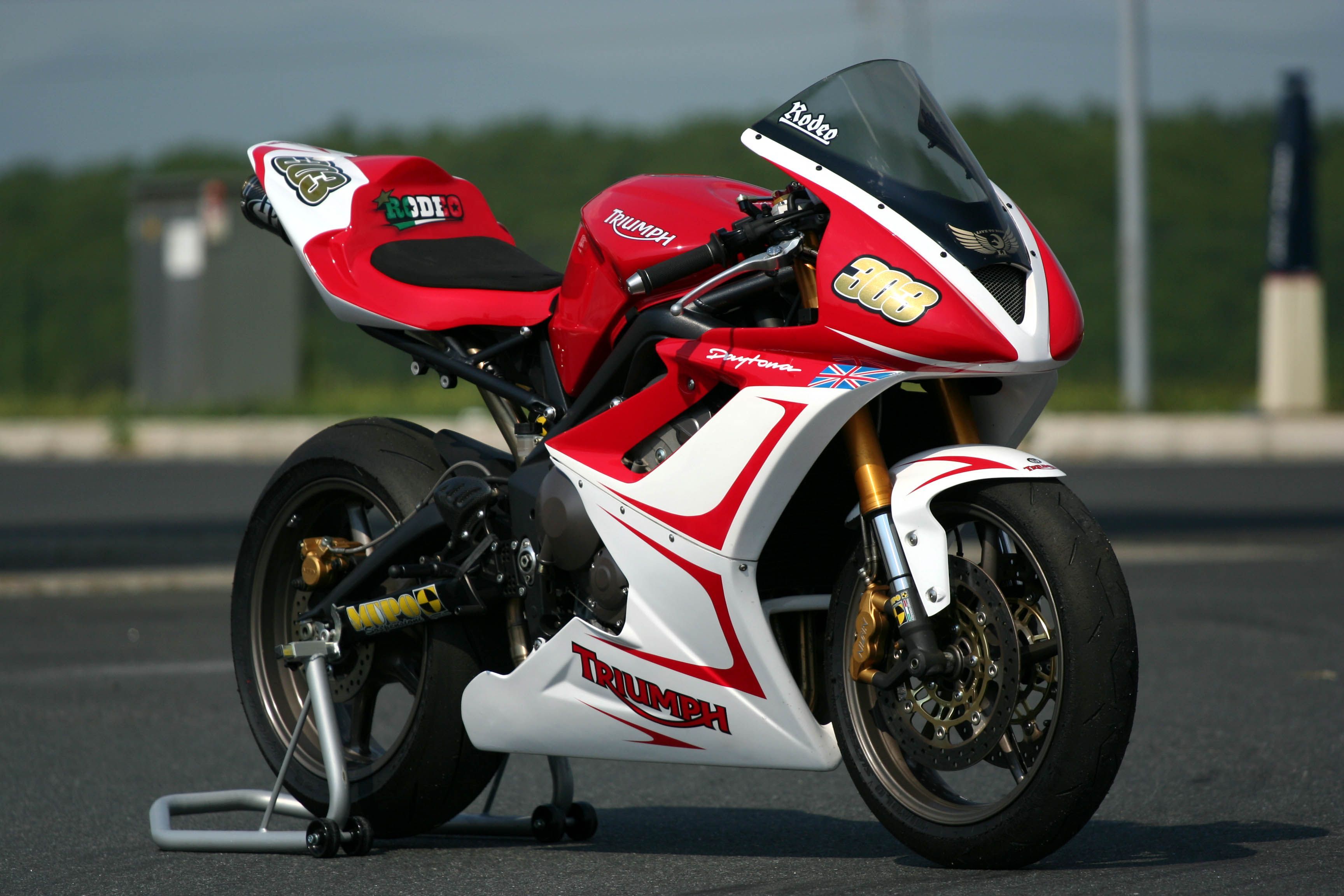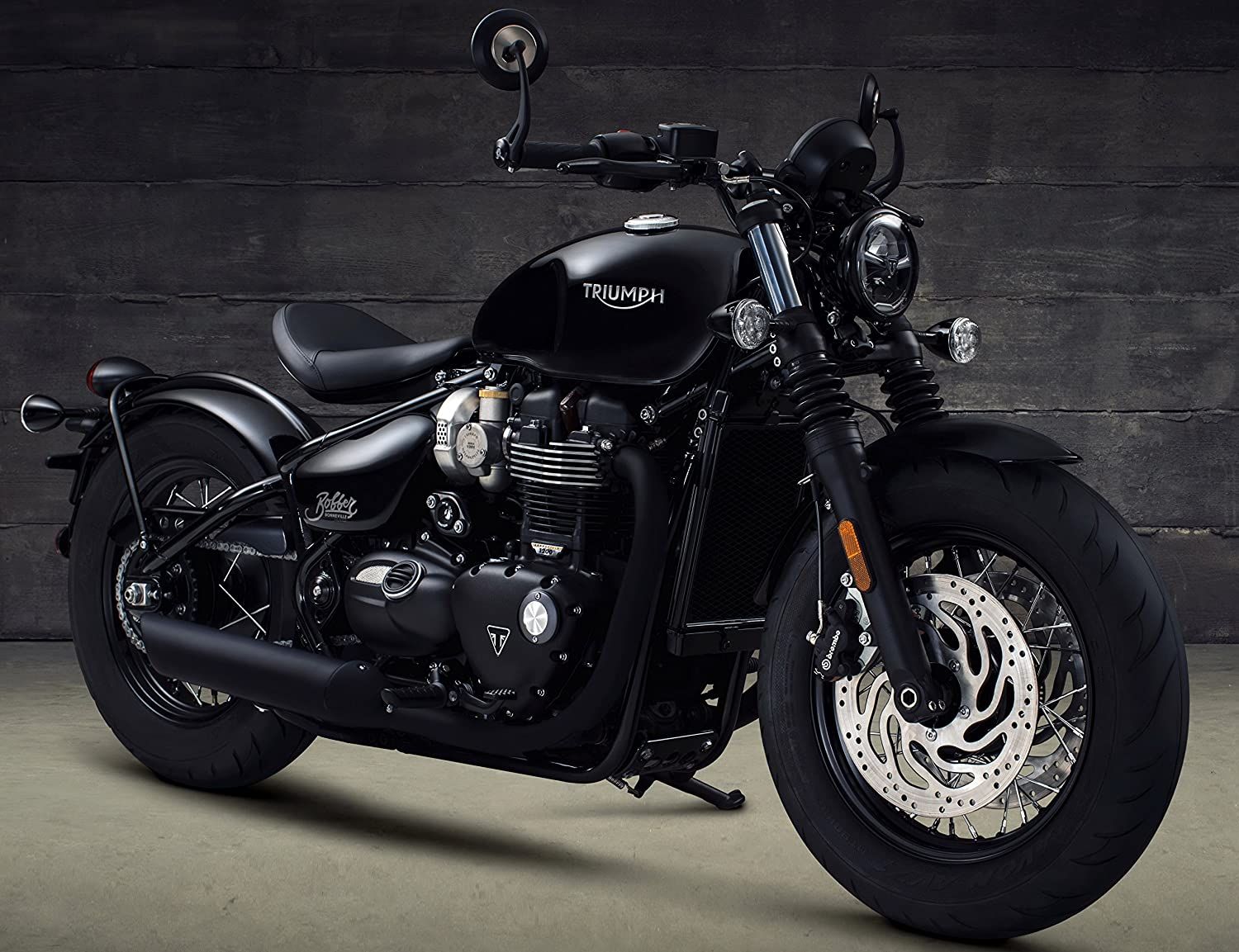Death must be a biker, and a fun-lovin' bad-ass Outlaw Biker at that, because when Triumph Motorcycles hit the wall in 1983, Death decided he didn't think Heaven would want it, and Hell was probably afraid it'd take over - so he sent it back.
A Stitch In Time
That hadn't been the company's first brush with the aforementioned Grim Reaper (maybe we'll call him 'Brian'); Triumph Engineering had already gone bust in 1939, and been forced to sell both kidneys and a lung prior to that.
The most British of motorcycle marques was in fact the creation of a German. Seigfried Bettmann was born in Nuremburg in 1863, emigrating to England at the age of 22. He worked as a translator for a sewing machine company, and a year later founded the Triumph Cycle Company (always with the sewing machines and the bicycles, what is it about motoring pioneers?).
By 1902 Bettmann and his business partner, fellow German Moritz Schulte, had established manufacturing in Nuremburg as well as Coventry in England, and it was in the British plant that the pair first spliced a Belgian-made 2.2hp gasoline motor into a bicycle frame, to create the first Triumph motorcycle. Motorized cycle production also began at the German factory a year later, assisted by investment from Dunlop, who had a vested interest in increasing tire sales, and in 1905 the company began manufacturing its own engines.
By 1907 Triumph was making its mark in the exciting new world of motorcycle racing, producing over 1,000 machines a year.
England vs Germany
The outbreak of World War I saw production being shifted towards military supply, with more than 30,000 motorcycles provided to British and Allied forces. The Coventry and Nuremburg arms of the company had split in 1913 amidst growing anti-German sentiment in Britain, with German production being re-badged as Triumph-Werke Nürnberg AG or TWN.
The majority of bikes sent into service were Model H, a 550cc, 4hp single-cylinder derivative of the 'Model A' that could hunt along at north of 40 mph, and was so reliable it earned the nickname 'The Trusty."
Siegfried himself had become the first non-British Mayor of Coventry a year before the war began, but his German origins saw him removed from the position; in spite of his and his company's tremendous contribution to the war effort, and irrespective of his Jewish roots, the good Burghers of the City didn't want him as their administrator.
The half-time interval between the World Wars saw Triumph branching out into car manufacturing, producing the 10/20 in a plant that the firm had bought lock, stock, and barrel along with the Dawson Car Company. Dawson was a minnow firm founded by AJ Dawson, inventor of the splash engine lubrication system, and a former Works Manager for Hillman, which was yet another sewing-machines-and-bicycles turned car manufacturing outfit (that was itself eventually absorbed by Chrysler).
Breakups And Get-togethers
Bettmann and Schulte had differed before the war, and went completely separate ways after it. The German-based division was sold off in 1929, with motorcycles continuing to be produced under the TWN brand until 1956 when it was acquired by typewriter manufacturer Adler (at least it wasn't sewing machines again). In England, Triumph struggled to make car building profitable, and, after selling off the bicycle division in 1932, flicked its motorcycle interests to Jack Sangster of Ariel and BSA fame in 1936. 1939 and the eve of WWII brought bankruptcy for the car division, which was acquired by the Standard Motor Company at the end of the hostilities.
Production at the Coventry facility continued under the direction of the Government Receiver, and when the factory was bombed flat in 1941, recovered machinery was shipped to a new plant at Meriden in Warwickshire. Manufacturing resumed at the new site in 1942, and motorcycles continued to roll off the lines there until 1983.
Sangster's involvement also brought an entrance to the US market for Triumph, and although the advent of the Second World War again diverted most of the marque's production to the military, the cessation brought great success as American civilian riders fell in love with the imported British bikes. By 1950, the USA was Triumph's single biggest export destination, and by the end of the sixties, fully half of the US market for bikes over 500cc belonged to Triumph.
In 1951 Sangster sold Triumph Motorcycles to BSA, which in 1973 posted such a huge loss that the UK Government (or Brian again) stepped in, resulting in the marque sharing a bed with Norton and Villiers; this unhappy arrangement resulted in a further bankruptcy four years later, on the back of seemingly insurmountable competition from Japanese brands, and their legendary reliability and performance, in the big bike sector.
Finance And Fire
Much of the North American success story belonged to the Bonneville, and the salt flats of the same name provided regular opportunities for Triumph-derived speed machines to display their prowess. Checkered flags continued aplenty on the track as well, with Daytona and the Isle of Mann TT providing rich pickings.
Despite the assistance it had received from the UK's taxpayers, the worker co-operative that had taken over the firm in 1977 met with Brian yet again in 1983. This time it was property developer John Bloor who played Death's benevolent angel, keeping the name just barely alive for six years, before ploughing $60 million of his own money into restarting production at Hinckley, not far from Meriden.
In 1995 exports of new Triumph bikes were on the way to The States once more, including the Bonneville America in 2002 - the same year the Hinckley assembly plant suffered a major fire. However, Triumph had another factory in England, one in Brazil, and three in Thailand.
Created by Germans, built in Thailand, and alive and well thanks to America, the most British of bikes has a fascinating past and a glorious future.

